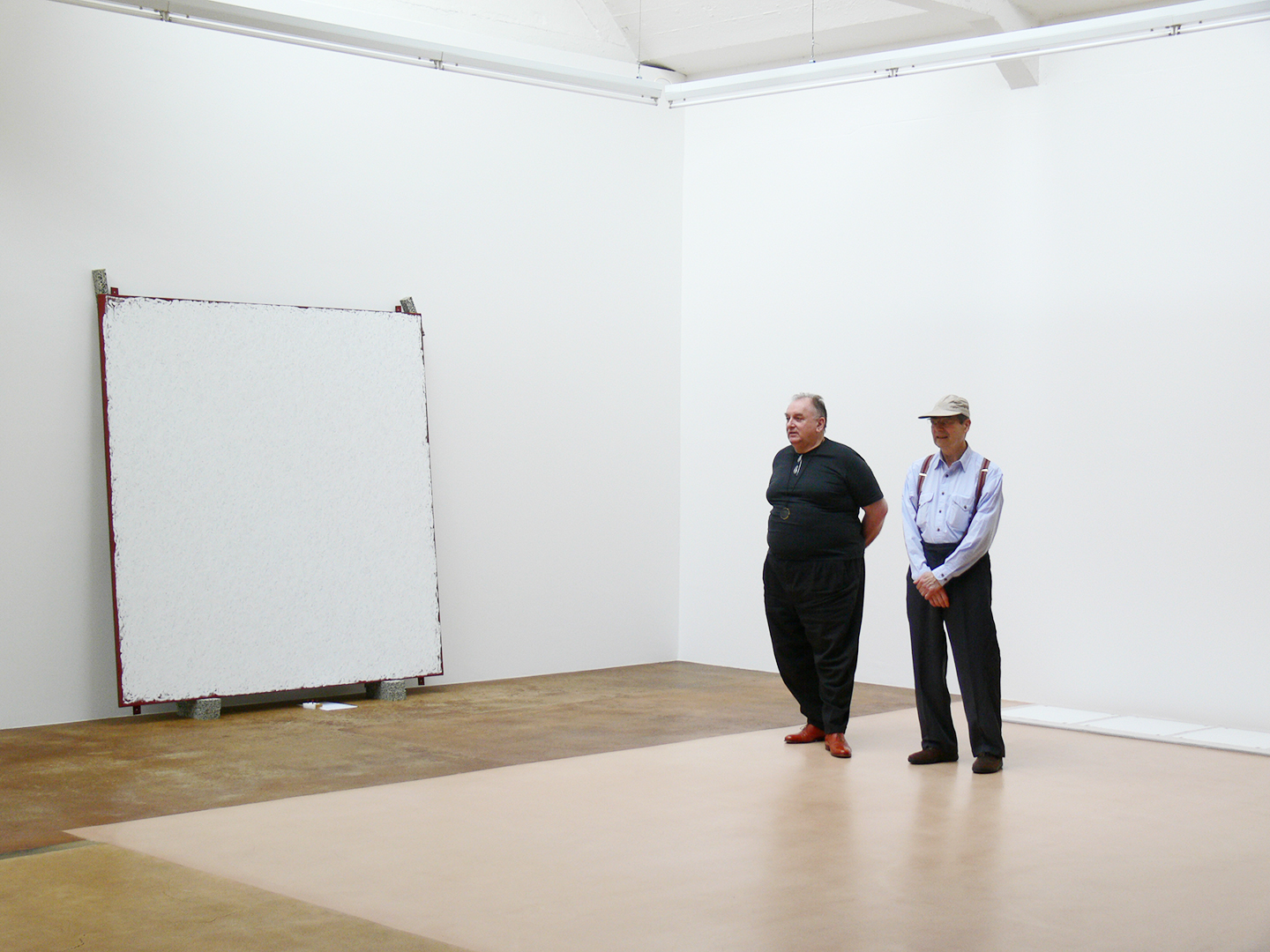Ryman Paintings and Ryman Exhibitions
A talk with Urs Raussmüller
Urs Raussmüller, you have known Robert Ryman since the 1970s. In 1978 you curated the first exhibition of his works in Zurich. In 1980 you realized a retrospective exhibition which was shown, among other places, at the Centre George Pompidou in Paris. Since 1984 you have had about 50 Ryman paintings on permanent display at the Hallen für Neue Kunst in Schaffhausen. In addition, you have mounted different Ryman exhibitions at different places with different selections of works, last in Munich and Bonn. What fascinates you in particular about this artist?
Above all, his openness. I mean openness in different ways. Ryman’s paintings do not exert force. Instead they allow things to happen. They do not insist on a theoretical concept and need not be perceived in a specific way. The observer is free to enjoy the painting’s effect on him. Indeed, he is well advised not to inquire too much about meaning and message in front of Ryman’s works, and to surrender himself instead to the particular mood of lightness and, yes, openness, which the paintings are capable of producing. The more he allows them to take effect on him, the more he will notice that he himself opens up, that his perceptive capacities react in a more nuanced way, that he becomes sensitive to fine points, details and intermediary tones – not just in relation to the paintings, but in principle, above and beyond them.
The term openness also aptly characterizes Robert Ryman’s complete oeuvre. Ryman started painting already in the mid-1950s, yet even after almost fifty years, his work is still fresh and full of surprises. It is not tied to one style or epoch, but has a remarkable timelessness. In fact, Ryman caused an opening in the understanding of painting. His oeuvre is of unsurpassed topicality, given that it manifests a free treatment of the possibilities of an ancient and apparently worn out art category.
Openness also applies to each and every individual painting by Robert Ryman. I have seen many of his works in different settings and under changing conditions. And I have always been surprised by the capacity of his paintings to produce unforeseen effects. Each painting is self-sufficient; it is actually what it is physically. Because of this physical quality, it reacts quite distinctly to its respective setting. As soon as they have found their place on the wall, Ryman’s paintings enter into a direct relationship with their surroundings. To a high degree they react to the incident light, to the materials around them, and to the wall as a background to unfold their effects. At least that is the case when they are appropriately installed. Unsuitably hung, this opening up to their surroundings does not take place.
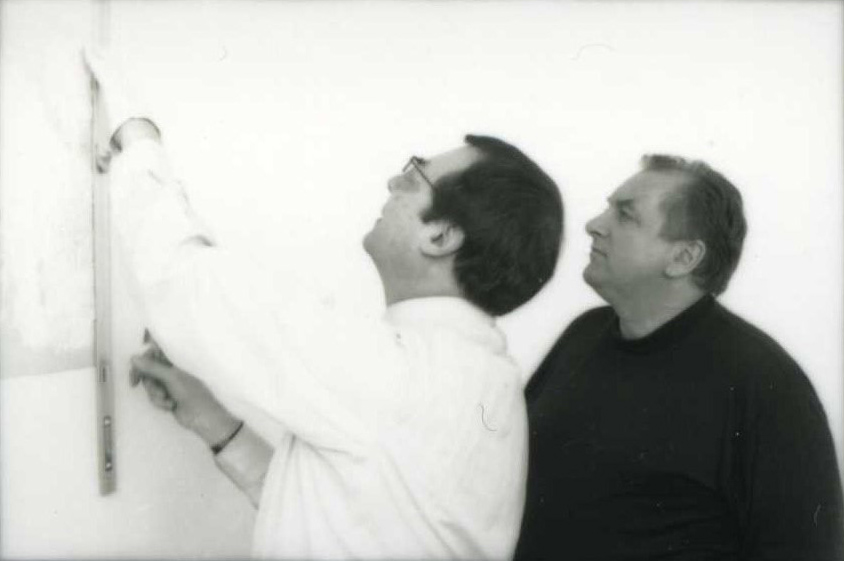
From an early point onwards Ryman focussed primarily on the colour white and the square as a format. This sounds like a clear concept, and more like a restriction than an opening. However, with this restriction he has produced a wealth of totally different pictorial impacts. In his case, is this potential for opening rooted in the decision to restrict himself?
You can put it that way if you want to. I myself do not see Ryman’s decisions and approaches as determined by a restriction. In my view, even his use of white paint does not have the aspect of a reduction, but is the practical precondition for an increase in diversity. First of all, white paint offers an incredible wealth of different qualities – both in tone and consistency. And secondly, no other paint reacts so directly and visibly to light. In fact, white makes everything visible: every brush stroke, even the trace of the individual hairs of the brush, every colour nuance and above all, every structural feature. This is a means of rendering paintings light and lively and as such is familiar to many artists. White colour zones are like reflection areas for light, demonstrating the whole range from lit to shaded parts. They alter with the changing incident light, like the surface of a lake, for example.
There can be no doubt that Ryman is a pragmatist. He uses the materials he regards as suited to his purpose. The white paint is just one of many aspects. You should see how much care he takes in selecting the screws for attaching his paintings to the wall. As visible components of his paintings, even the screws – like every other part – have an influence on the impact of the painting. With the same care Ryman decides which materials he paints on, which brush he uses, how he applies the paint, the size of the painting, its depth, the transition from painting to wall, etc. All these decisions are prerequisites for being able to start painting at all. But when these preconditions have been created, it is not a plan that comes into action. What then happens is something different, something that includes the unanticipated. The artist then paints.
Ryman’s paintings are largely the fruits of action, of a mixture of experiment and experience. Sometimes this artist seems to me like a researcher who develops new solutions from as yet untested combinations of substances. If the result does not turn out well, it does not leave the laboratory. It can also happen that chance, a spontaneous reaction, decisively influences the production process and thus the impact of the result. What I mean is that intuitive behaviour plays a much greater role in Ryman’s works than planning. He himself says that he only considers a painting as successful if it surprises him. Meaning that he does not determine the impact of his works in advance but allows it to emerge. For me this approach is another aspect of openness.
It also corresponds to the behaviour that Ryman desires of the viewers of his works. He would like his works to arouse emotions, create moods and mediate experiences which, as he puts it, have to do with “enlightenment and delight and curiosity”. This actually contradicts any theory-oriented understanding of art. Are these aspects also important when it comes to mounting an exhibition of works by Robert Ryman? Can you say what, for you, is the most important aim of your Ryman exhibitions?
To provoke that very experience which a viewer can have in front of Ryman’s paintings and which has to do in particular with the perception of one’s own being. I don’t want to give the impression that Ryman is good for esoteric experiences. That would not do justice either to the artist’s worldview or to the realism of his paintings. After all, an essential characteristic of his works is that everything about them is real and factual. Yet I know of few other artists whose works are capable of arousing emotions merely by their physical presence and in such an unspectacular a manner. I could even say that I know of scarcely any works by other artists that have this inherent openness to individual impact.
The sensory impact of Ryman’s paintings is not controlled; it is neither bewitching nor sublime. It turns out primarily as a feeling of composure and peace. Only gradually does the viewer become aware of this as a heightened perceptive ability, in other words, a heightened sensitivity. The viewer takes this sensitivity with him when he leaves the exhibition. I referred to this impact at the beginning of our conversation. It is one that I find extremely enriching. Presumably that is another motivation for mounting these exhibitions. I would like as many people as possible to experience this enrichment. Of course, this presupposes the viewers’ readiness to allow it to happen. For their part, they must bring an openness with them, and take the time required for the impact of the paintings to grow and intensify. An intense experience of art always requires time.
On the other hand – that is, as far as I am concerned – mounting an exhibition that will do justice to Robert Ryman’s paintings presupposes a certain handling of the works. The capacity of these paintings to achieve an emotional impact is one thing. The other is the support that this capacity needs to unfold. I must decide from the very beginning, therefore, what I want to achieve with an exhibition. If I want the paintings to have a direct impact on the exhibition viewers, then my choice of works and their subsequent presentation will presumably be different to a chronological illustration of the artist’s development. Both would result in a Ryman exhibition, but the statement and the impact would be completely different.
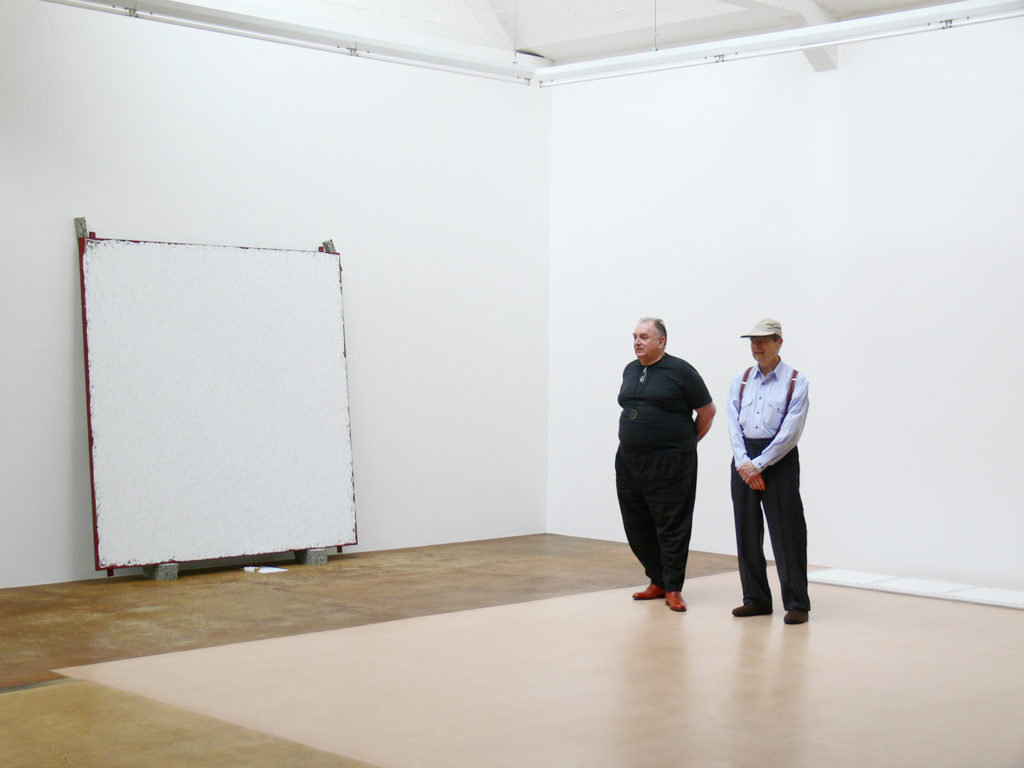
Your Ryman exhibitions and the installation of Ryman’s works in Schaffhausen are special because of their basic avoidance of any chronological order. Instead you hang the paintings in such a way as to create a rhythm that is musical, vibrant, and you always do this in close cooperation with the artist. You would seem to be countering an art-historical demonstration by an artistic one. Do you intent to intensify the impact of the individual Ryman paintings with the help of the exhibition?
Perhaps not to intensify it, but certainly not to restrict it. For me, it is very important that each individual work is recognised for what it is. The more I work with Ryman’s paintings, the more I realize the differences between their features. That is the difficult thing with such an exhibition; it is supposed to function as a whole and yet give expression to a diversity. Where possible, each painting should have the conditions that best enable it to freely radiate. At the same time, a convincing resonance should be created. It’s a bit like with the wood and the individual trees. In itself, each tree is a complete unit. And still, the wood is not perceived as a sum of many units, but as a whole.
How does collaboration between you and the artist on an exhibition work? In the meantime you are a tried and tested and successful team.
It works in a completely natural way. The artist knows exactly what he intended with each of his paintings, how he developed them, and what impact he expects them to have. I, on the contrary, know how I experienced the impact of the individual works at different places and under the most varied conditions. Together we try to achieve the best effect. Needless to say, this is not always possible, and certainly not everywhere. Because Ryman’s subtle paintings are capable of underscoring the features of their surroundings, they can also easily fall victim to those surroundings. If they are not sufficiently lit or have to be hung close to some dominant elements, they will not necessarily be able to assert themselves. It is important to avoid this, through the choice of works and their position on the wall and in the rooms.
The impact of a Ryman exhibition depends mainly on the light and the space. The aspect of time adds to this, but I will leave that aside for the moment. Light and space are factors established by the exhibition venue. I must be able to react to both, in the choice of works and how they are hung. I have used the term unfolding several times already. If the paintings cannot unfold, they also cannot have an impact. If the light is not sufficient to make all the nuances visible, the viewer can look at the paintings as long as he wishes, he will scarcely see them – at least not in the way he would if they were adequately lit. If the room has a low ceiling or short walls, I am restricted from the outset in the choice of paintings and their position. It may well be that I cannot show particularly large paintings, or create a kind of rhythm on the wall space.
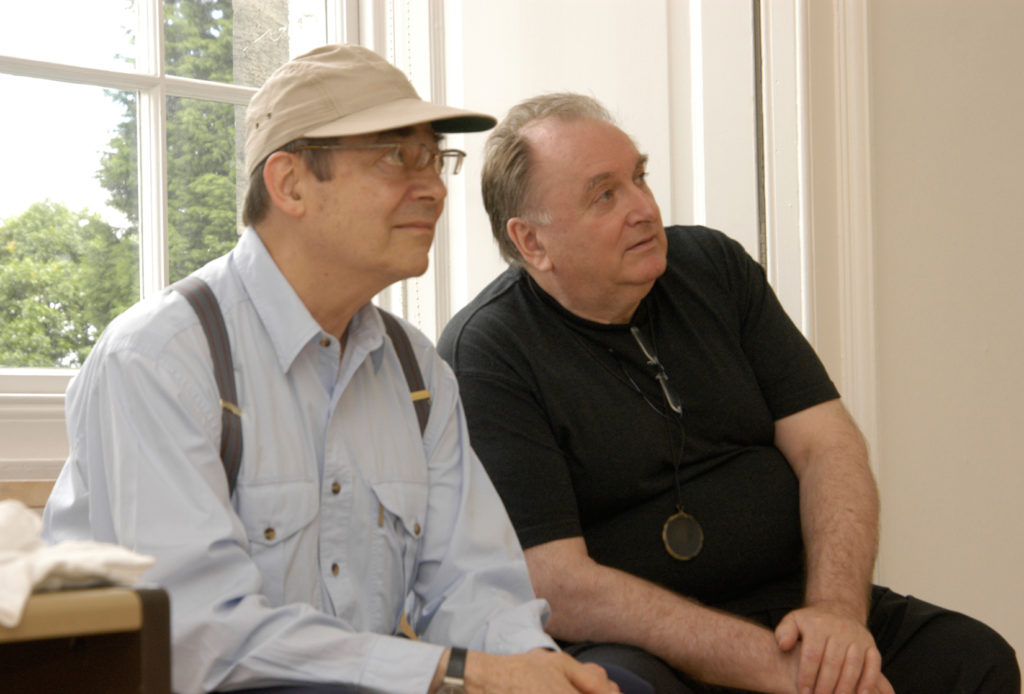
How do you approach such an exhibition? Presumably the principles of the planned and the intuitive approach play a role not just in the genesis of an artwork, but also in the realization of an exhibition.
That’s true to a certain extent. Yet without careful planning even the greatest intuition would probably be useless. The intuitive moment is important when it comes to positioning the individual paintings at the venue, in the room. Before that, a whole series of decisions has to be made. The first has to do with the choice of works. Which paintings will I select for the exhibition? What will and can I show at a certain venue? An exhibition in accordance with, for instance, chronological principles makes the decisions relatively easy. In that case I have to endeavor to show the most exemplary works from the different periods. The sequence comes about more or less by itself. But if the exhibition follows other principles, like for example, presenting extraordinary individual works, arousing emotions, or provoking experiences with perception, then different criteria apply in the choice and installation of the artworks. Then intuition plays a major role.
I personally regard a chronological hanging of Robert Ryman’s works as unfavorable. With a book or catalogue it is different; a logical sequence makes sense there. But in an exhibition this all too easily creates the impression of a series, although basically they are individual works from particular work periods. Ryman himself makes clear distinctions between multi-part works, and works which stand alone. What is special about his oeuvre – although it might at a superficial glance create an unified impression – is its extraordinary wealth of pictorial characters. This should be visible in an exhibition. Occasionally his paintings are true inventions, without a model, and often also without a successor in his own oeuvre. That is the aspect which interests me most and emphasising it means concentrating less on the different pictorial types and more on specific individual works, which can of course include series.
A Ryman exhibition poses yet another a problem, and that is the installation of his paintings. Ryman has deliberately made the link between the painting and the wall a constitutive part of his oeuvre, and has developed special hanging systems for each individual painting. These fasteners are the physical transitions from the painting to the place where it hangs and, as such, they are visible. Ryman says his works are only complete when they are hanging correctly on the wall. Needless to say, as an artist he cannot anticipate where his paintings are going to be and how they will be treated there. But he can show what he understands by a correct hanging. That is now my task: to install the paintings I have selected correctly with regard to the exhibition venue. This involves not only the hanging, but also their relationship to their surroundings.
This means that you have to know not only the paintings and their particular impact, but also the rooms in which they are to be shown.
Yes. Without knowing the rooms, I couldn’t make a meaningful selection of works.
Are the exhibitions conceived individually for the respective venue?
Where possible, yes. If an exhibition is to be shown at several venues, as recently in Munich and Bonn – and a year ago in Paris – the selection includes more works than are needed at the individual venues. This enables me to create different installations, to react to the respective architectural situation and to literally show the paintings in a new light.
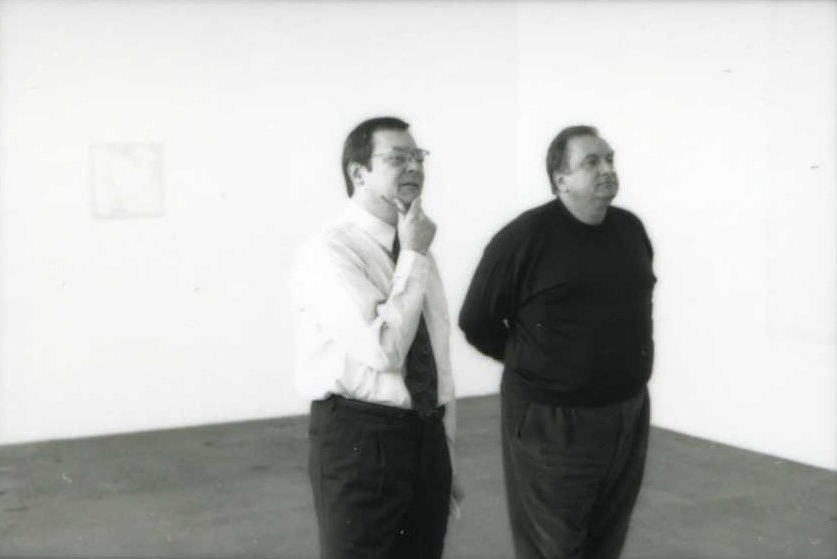
Light is a tricky and very important point. More than other artworks, Ryman’s paintings are dependent on the lighting because of their manifest capacity to absorb and radiate light. Yet you have no influence on the light situation in museums.
But I can try and choose paintings that are able to cope with the given exhibition venue. There can be no doubt that daylight is best suited to give expression to the features of Ryman’s paintings. We have such suitable conditions at the Hallen für Neue Kunst in Schaffhausen, where it is possible to see how the paintings enter into a vivid interaction with the changing incident light. Depending on that light, they either come fully to the fore, or certain parts and materials are enabled to do so. There is something physical about this action. The viewer experiences it as a superimposition of complementary impressions or as progressive stages in the process of perception. With artificial lighting, this action does not come about. The capacity of the paintings to react directly to changes is limited and thus, of course, their lively impact.
But light has a further aspect. It incorporates the passing of time. Constant, unchanging lighting is like the elimination of time. In artificially-lit museum rooms, the viewer is as if in a timeless state. I make no reference here to only allowing so and so many Lux in order to conserve artworks. All of that is justified. But for artworks which, like Ryman’s, are determined to such a high degree by their physical components, the conditions under which they are exhibited are vital for their impact. In the case of Ryman’s paintings, their radiation (Ausstrahlung) is not metaphorical, it refers to a physical process. The term is very apt for illustrating the high degree of reality which these works possess.
The above text is an excerpt from an interview with Urs Raussmüller in Basel in August 2001. You find the interview in its entirety in our publication Urs Raussmüller: Ryman Paintings and Ryman Exhibitions (2006).
22.02.2019
© Urs Raussmüller, Christel Sauer / 2001
